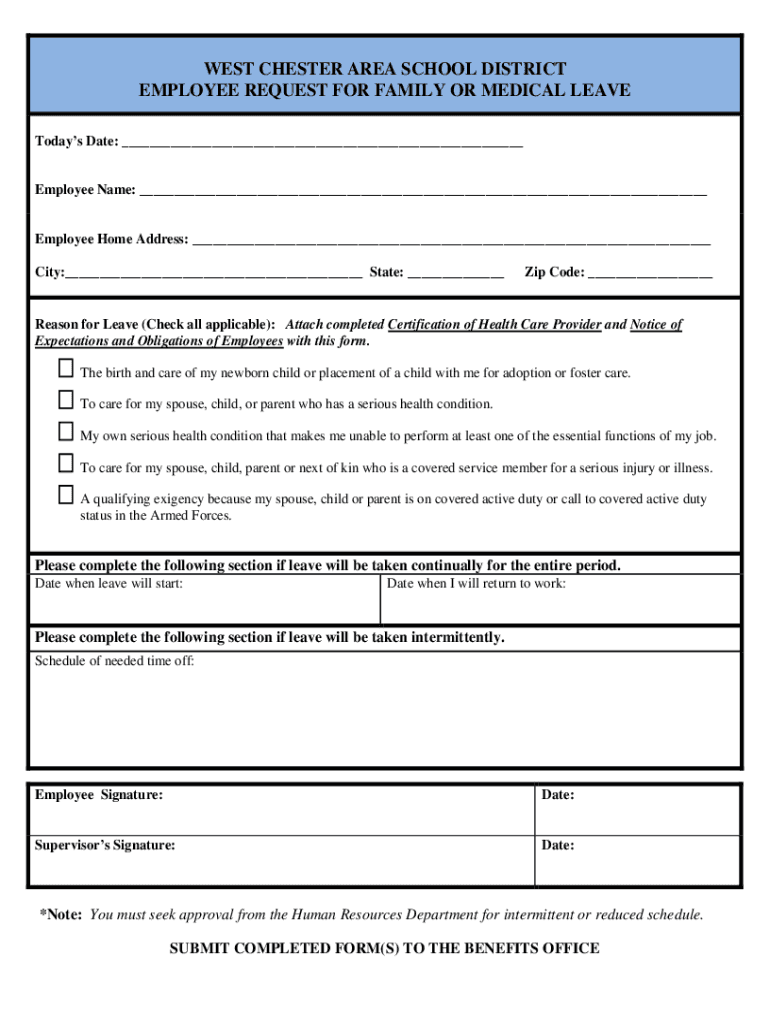5 Ways to Get FMLA Paperwork Filled Out for You

When you or a family member faces a significant health issue, knowing how to navigate the Family and Medical Leave Act (FMLA) can be a vital part of managing both your health and work responsibilities. FMLA provides eligible employees with up to 12 weeks of unpaid, job-protected leave per year, but to access this benefit, you need to get the proper paperwork filled out. Here are five ways to help ensure you get your FMLA paperwork processed efficiently:
Understand the FMLA Requirements

Before diving into the paperwork, understanding the basic requirements and eligibility criteria for FMLA can save you time and potential frustration. Here’s what you need to know:
- Eligibility: You must have worked for your employer for at least 12 months, and for at least 1,250 hours over the previous 12 months.
- Covered Employers: Only employers with 50 or more employees within a 75-mile radius are subject to FMLA.
- Reasons for Leave: FMLA covers several scenarios including birth of a child, care of a newborn or newly adopted child, care for a spouse, child, or parent with a serious health condition, or your own serious health condition.
Communicate Early with Your Employer

Effective communication with your HR department or supervisor is crucial:
- Notify your employer of your need for FMLA leave as soon as possible.
- Request the FMLA paperwork directly or inquire about the process.
- Express your intention to return to work after the leave, which can help ease any administrative concerns.
🔍 Note: Early communication can often lead to a smoother process and more understanding from your employer.
Use HR Services or Employee Assistance Programs (EAP)

If your company has a Human Resources (HR) department or an Employee Assistance Program (EAP):
- HR can guide you through the process, provide forms, and even help with employer contact.
- EAP might offer support through legal or health-related queries.
- These services can assist in explaining FMLA, helping you fill out forms, or directing you to the right medical personnel.
Engage Your Healthcare Provider

Your healthcare provider plays a pivotal role in filling out the medical certification part of the FMLA application:
- Discuss your FMLA need with your doctor early on.
- Provide your physician with the FMLA Certification of Health Care Provider form.
- Ensure the doctor understands that FMLA covers serious health conditions, and they need to certify the medical necessity of leave.
| Form Section | Description |
|---|---|
| Part A | To be completed by the employer or employee, providing basic information. |
| Part B | Health Care Provider fills out this section to certify the medical condition. |

📄 Note: It might take time for your doctor to fill out the form, so factor this into your planning.
Hire a Professional to Manage Documentation

When the process seems too overwhelming or you’re dealing with a complex medical issue:
- Consider hiring a benefits consultant or medical leave specialist.
- These professionals can ensure all documentation is correct and handle any follow-up or communication required.
- They can navigate both the medical and administrative sides of FMLA for you, reducing your stress.
Successfully navigating the FMLA process involves more than just filling out paperwork; it's about managing expectations, maintaining clear communication, and ensuring all parties are well-informed. By using these strategies, you can streamline the process, ensuring you or your family member can take the necessary time off without the added burden of administrative tasks.
What happens if my FMLA paperwork is incomplete or rejected?

+
If your FMLA paperwork is incomplete or rejected, your employer will notify you. You typically have a short timeframe to correct and resubmit the documentation. Ensure you review and correct any mistakes or provide any missing information as promptly as possible to avoid delays in your leave approval.
Can I take FMLA leave intermittently?

+
Yes, FMLA can be taken intermittently. This means you can take leave in blocks of time or by reducing your usual work schedule when medically necessary. Discuss your needs with your employer to ensure compliance with FMLA regulations.
Is FMLA leave paid?

+
FMLA leave itself is unpaid, but there are exceptions. Some employers might offer paid family leave, or you might have paid time off or short-term disability benefits that can be used concurrently with FMLA leave. Check with your HR department for more details on what options might be available to you.